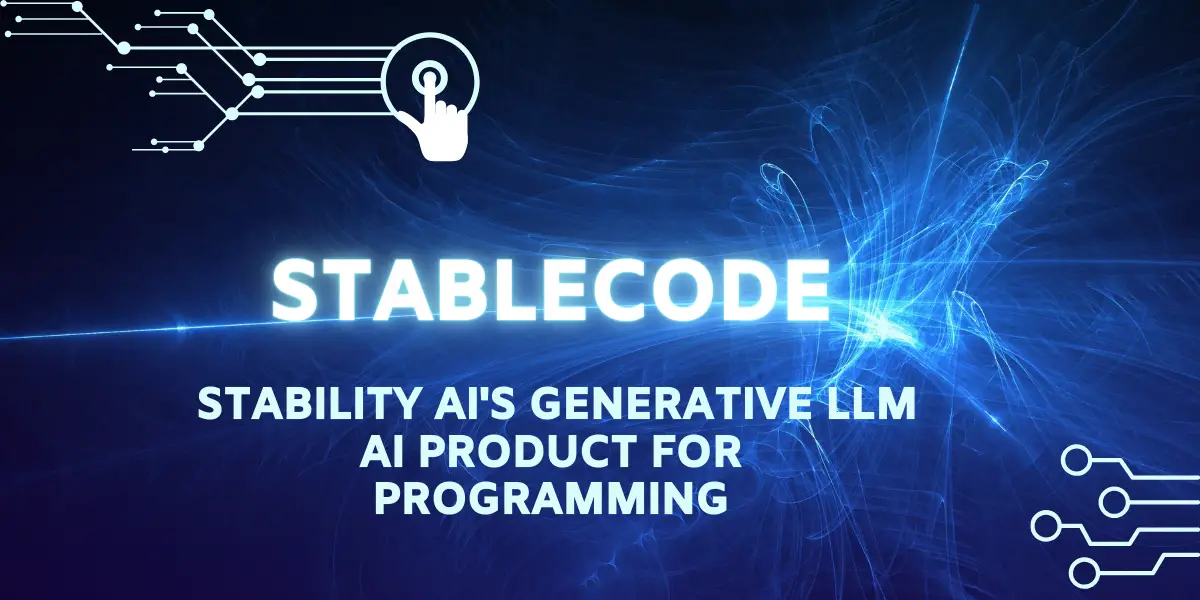StableCode:Stability AI's Generative LLM AI Product For Programming

In the ever-evolving world of technology, the demand for efficient and intelligent code generation tools has skyrocketed. With the rise of AI and machine learning, the software development landscape is undergoing a transformative shift. Enter StableCode, Stability AI’s latest offering in the realm of generative AI for programming. This article delves deep into the intricacies of StableCode, its parent company Stability AI, and the features that set it apart in the crowded market of AI-driven code generators.
Table of Contents
What is StableCode?
StableCode is a state-of-the-art language model designed for code generation. It’s not just any language model; it’s a product released as open-source software under the Apache license, version 2.0. According to Stability AI, StableCode is constructed on three distinct models. The base model, with a whopping three billion parameters, was built on Eleuther’s GPT-NeoX. This model was pre-trained with a plethora of programming languages from the BigCode dataset and later expanded to include more languages like Python, Go, Java, Javascript, C, Markdown, and C++, accumulating a total of 560 billion tokens.
What is Stability AI?
Stability AI is a pioneering company at the forefront of AI-driven solutions. Their vision revolves around the belief that artificial intelligence will fundamentally alter the relationship between humans and computers. With products like StableCode, they aim to make coding accessible to a broader audience, ensuring that people from diverse backgrounds can leverage AI to solve everyday problems and enhance their lives.
See more:What is Stability AI’s New LLMs:FreeWilly1 and FreeWilly2
Features and Benefits
Open-Source Nature: One of the standout features of StableCode is its open-source nature, allowing developers worldwide to access, modify, and improve upon it.
Diverse Language Support: With support for multiple programming languages, StableCode offers versatility unmatched by many of its competitors.
Instruction Model: Built atop the base model, the instruction model has been refined with concrete application examples to tackle intricate programming tasks using the Alpaca formula.
Large Context Window: The 16K variant of StableCode boasts a larger context window, enabling the model to view more code simultaneously, potentially generating superior code.
Three different models
Three Billion Parameter Base Model: This model, constructed on Eleuther’s GPT-NeoX, was pre-trained with numerous programming languages from the BigCode dataset.
Instruction Model: This model is an enhancement of the base model, refined with specific application examples to address complex programming challenges.
StableCode 16K: A variant of the standard model, the 16K model can view or edit the equivalent of up to five medium-sized Python files at once.
StableCode models available in 4K and 16K
StableCode is not just confined to a single variant. It offers two primary versions: the 4K and the 16K. The 16K model, with its larger context window, is especially beneficial for novices. It can view or edit up to five medium-sized Python files simultaneously. Both models can generate and complete single or multiple lines of code.
See more:Stability AI Releases New Stable Diffusion XL 1.0 Model
Alternatives of StableCode
StableLM: Released in April, StableLM was Stability AI’s first open-source language model. It set the stage for the subsequent development of StableCode.
Free Willy: This language model, based on Meta’s Llama v2, has been refined with a synthetic dataset. It matches or even surpasses the performance of the original model and, to some extent, GPT-3.5 (ChatGPT).
Github Copilot: While not a product of Stability AI, Github Copilot serves as a notable alternative in the market. However, Stability AI’s announcement did not include a direct comparison of StableCode’s performance against Github Copilot.
Conclusion
StableCode, with its advanced features and robust performance, is poised to revolutionize the realm of AI-driven code generation. Stability AI, with its visionary approach, is undoubtedly leading the charge in making AI accessible and beneficial for all. As the boundaries between humans and computers continue to blur, tools like StableCode will play a pivotal role in shaping the future of software development.

